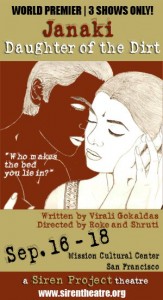 Last month, a group of us were sitting at Currylicious drinking chai and discussing the recent article that had come out about Bikram Choudhury of THE Bikram Yoga. Bikram, apparently, is prone to a “free-loving” nature with his yoga followers or as stated in the title of the article, it is an “Overheated, Over-sexed Cult.”
Last month, a group of us were sitting at Currylicious drinking chai and discussing the recent article that had come out about Bikram Choudhury of THE Bikram Yoga. Bikram, apparently, is prone to a “free-loving” nature with his yoga followers or as stated in the title of the article, it is an “Overheated, Over-sexed Cult.”
“Well, that’s not too surprising…” someone mentioned. “It sounds like the Osho Ashram in India where you need to get STD tests before entering.” That’s when our conversation took an interesting turn. The Osho Ashram they were talking about is located in Pune, India. Established in 1974, it was the place where Osho made his eventual return in the 1980s and his final resting spot when he passed away in 1990. But before Osho was known as Osho the “sex guru” of India, he was known as Bhagwan Shree Rajneesh the “Rolls-Royce guru” of Oregon.
That’s right, I said it. Oregon. In the early 1980s Rajneesh and his 2,000 followers set up camp in the ranch lands of Eastern Oregon at a place they named Rancho Rajneesh. The story that ensues has all the twists and turns of a Hollywood big screen hit. This past weekend, The Oregonian wrote up a fascinating five part expose of the Rajneeshees rise and fall, 25 years later. They have colorfully eerie photos from the days of the city’s hey days and have a great collection of documents archiving this bizarre story. I’ve always known that there has been a rich history of traveling gurus coming to America, but this was hardly what I had in mind.
Thousands dressed in red, worked without pay and idolized a wispy-haired man who sat silent before them. They had taken over a worn-out cattle ranch to build a religious utopia. They formed a city, and took over another. They bought one Rolls-Royce after another for the guru — 93 in all.
Along the way, they made plenty of enemies, often deliberately. Rajneeshee leaders were less than gracious in demanding government and community favors. Usually tolerant Oregonians pushed back, sometimes in threatening ways. Both sides stewed, often publicly, before matters escalated far beyond verbal taunts and nasty press releases. [theoregonian]
The story started when Osho/Rajneesh escaped India after a crackdown on his smuggling and tax fraud. His chief of staff was the 31 yr old Ma Ananda Sheela. Continue reading →

